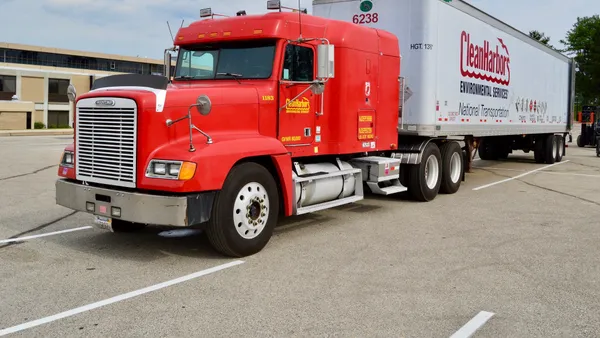Dive Brief:
- The Virginia Department of Environmental Quality's (DEQ) annual solid waste report for 2016 shows that facilities in the state accepted 22.04 million tons of waste last year, up from 20.7 million tons in 2015. For 2016, about 72% of this material came from within Virginia. Approximately 72% of this material was landfilled, 11% was processed at combustion facilities and the rest was diverted through other methods.
- The amount of out-of-state waste increased by nearly 14%, with the vast majority of material coming from Maryland, Washington, D.C., North Carolina, New York and New Jersey. Municipal solid waste imports decreased by 3.4%, while C&D increased by 5% and industrial waste spiked by 181.4%. Internally, Virginia saw modest increases in MSW and C&D, and a decrease in industrial waste.
- DEQ estimates that the average remaining MSW capacity among 53 permitted landfills is a little more than 24 years. Estimated capacity for the state's 14 C&D landfills is 15 years and its three industrial landfills have an estimated 15.6 years.
Dive Insight:
This DEQ report was based on data provided by 202 facilities within Virginia and is not meant to give a full picture of the state's recycling efforts. DEQ plans to release its annual recycling report with 2016 data later in the year. According to a chart in the report, overall amounts of MSW from within the state have gone up slightly since 2010, though imports have actually seen a slight decrease. Maryland, New York and D.C. are currently the largest MSW sources. A recently inked 20-year export deal between Waste Management and New York City that includes Virginia's Atlantic Waste Disposal landfill could change these figures in future years.
The increase in C&D imports tracks with overall trends reported by multiple companies in the industry as construction spending continues to rise around the country, though the uptick in imported industrial waste is among the most notable changes since 2015. North Carolina appears to be the main driver behind this trend, sending nearly 813,000 tons of material to Virginia in 2016 compared to a little more than 92,000 tons in 2015. The push to close regional coal ash ponds and properly dispose of the material due to changing regulations may be a factor.
While Virginia's remaining disposal capacity is more robust than other states, these DEQ statistics show that increasing diversion activity in the coming years would be a helpful step to ensuring it stays that way. New projects such as the contentious RePower waste-to-energy facility will help expand those options though that process and other experiences show it is becoming harder to build new disposal capacity of any kind. Unless efforts are made to limit import volumes, which does not appear to be the current strategy, the most direct option may be to address waste generation habits within Virignia's own borders first.











